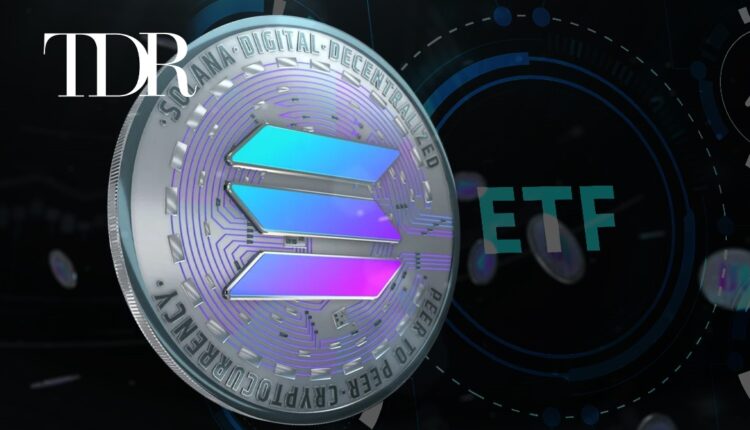
VanEck’s Solana ETF: Regulatory Prospects and Challenges
The TDR Four Key Takeaways regarding VanEck Filed For a Solana ETF and Its Prospects and Challenges:
- What happened: VanEck filed for a Solana (SOL) ETF, causing Solana’s price to rise by 6%.
- History: Solana is a blockchain platform launched in March 2020, known for its high transaction speeds and low costs, gaining significant traction in the crypto market.
- Why it matters: The ETF filing signifies growing institutional interest in Solana, which could lead to increased investment and legitimacy for the cryptocurrency.
- What is next: If approved, the Solana ETF could attract more investors and potentially boost Solana’s market value further.
VanEck filed for a Solana ETF, the proposed Solana ETF aims to provide investors with exposure to the SOL token, echoing similar developments made by ETFs for bitcoin and ethereum. The market sentiment was positive toward this news, and the Solana token price traded higher by 6%. VanEck’s head of digital assets research, Matthew Sigel, asserts that SOL should be treated as a commodity rather than a security. This distinction is crucial as it could influence the Securities and Exchange Commission’s (SEC) decision on the approval of the ETF.
VanEck is confident about the classification of the SOL token. “We believe the native token, SOL, functions similarly to other digital commodities such as bitcoin and ETH,” wrote Matthew Sigel on X. He emphasized that SOL is “utilized to pay for transaction fees and computational services on the blockchain,” reinforcing the argument that SOL operates like a commodity. This perspective is vital in the ongoing debate about the regulatory treatment of cryptocurrencies.
Despite the optimism from VanEck, there are considerable hurdles to overcome. Bloomberg Intelligence ETF analyst James Seyffart expressed skepticism about the ETF’s near-term prospects. “[My] early thoughts are that this only has a shot to launch sometime in 2025 if we have a new admin in the White House and SEC,” he noted on X. Seyffart’s viewpoint underscores the regulatory uncertainty that surrounds the approval process for cryptocurrency-based ETFs.
The Solana token’s characteristics support VanEck’s commodity argument. Sigel highlighted, “SOL’s decentralized nature, high utility, and economic feasibility align with the characteristics of other established digital commodities.” He believes that SOL could be valuable for “investors, builders, and entrepreneurs looking for alternatives to the duopoly app stores.” This statement underscores the potential broad applications and appeal of SOL beyond its use as a digital currency.
Mert Mumtaz, a Solana developer and co-founder of Helius, defended Solana’s decentralization, addressing a common critique. “People will say Ethereum is more decentralized than Solana and this is true. But this doesn’t mean Solana is centralized. By every observable metric, Solana is in the top 1% of decentralized networks,” Mumtaz told The Block. His comments help position Solana as a strong and decentralized platform, further supporting its commodity classification.
The broader cryptocurrency community remains divided on the likelihood of the ETF’s approval. The current regulatory environment under the Biden administration is seen as challenging for new cryptocurrency products. However, Sigel’s detailed explanations about the utility of the SOL token bolster the argument that it should be considered a commodity. “To me, SOL is obviously a commodity as a builder since i) you need it for prioritizing transactions ii) getting network bandwidth via stake iii) allocating storage iv) paying network fees etc.,” Mumtaz added.
VanEck’s pursuit of a Solana ETF hinges on the SEC’s decision about whether SOL is a commodity. The future of the Solana ETF remains uncertain and closely watched. If approved, the Solana ETF could attract more investors and potentially boost Solana’s market value further. Want to be updated on Cannabis, AI, Small Cap, and Crypto? Subscribe to our Daily Baked in Newsletter!



